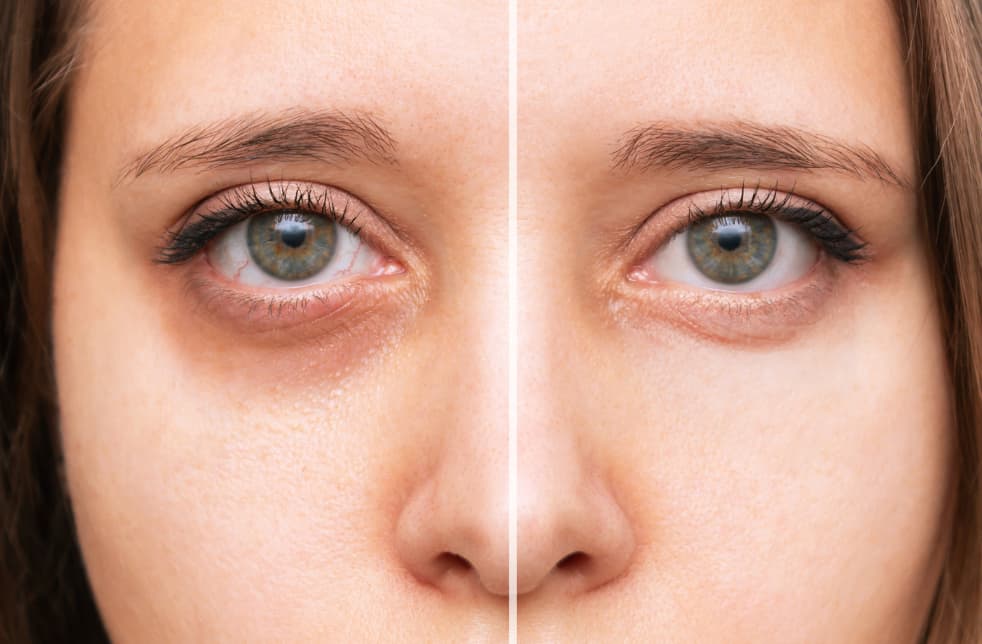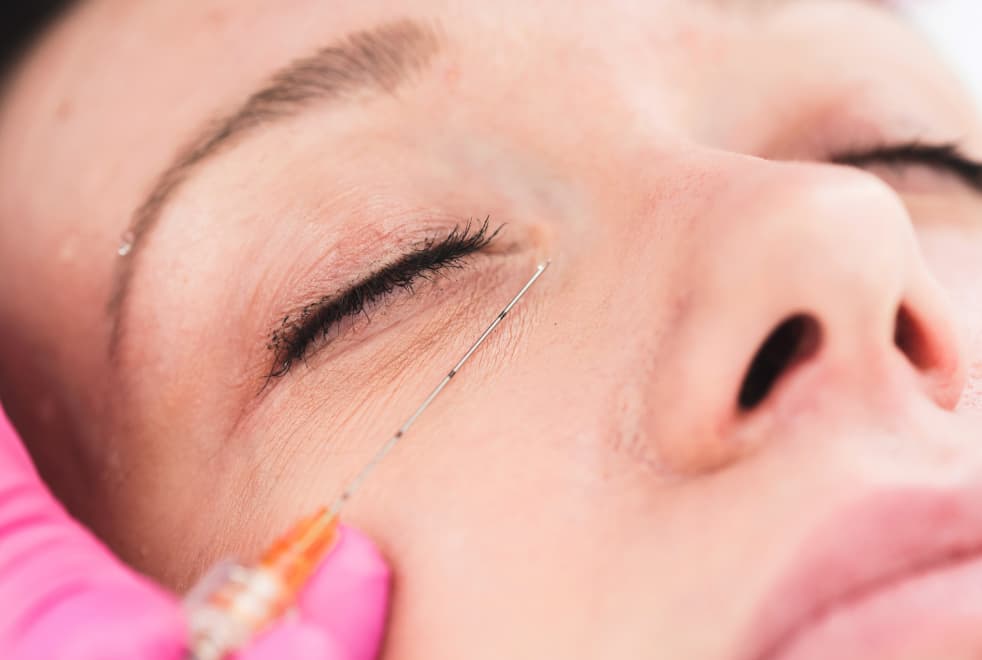Many people are bothered by the presence of dark circles underneath their eyes. The complaints vary from remarks about appearing tired and sad to looking older or even unwell. So, it’s difficult not to be drawn to a non-surgical treatment solution that promises to make the eyes look more youthful and well-rested, such as tear trough fillers.
Targeting the hollows underneath the eyes, the treatment uses fillers to address volume loss. The are a number of before-and-afters you can find online that demonstrate the transformative potential of this treatment. Yet, while it can be effective in improving the appearance of the under-eye area, it’s important to understand that it’s not for everyone. Additionally, for this treatment, it’s imperative to find a qualified medical practitioner.
What Is A Tear Trough Filler?
A tear trough is a concave area underneath the eyes that gives them a hollow, sunken appearance. It may also cast shadows to make it look like you have dark circles. Tear trough filler, therefore, is a non-surgical cosmetic treatment that uses hyaluronic acid-based dermal filler for volume restoration and rejuvenation of the area underneath the eyes.

According to a 2023 research published in the Plastic and Reconstructive Surgery – Global Open, tear trough fillers have several advantages, such as:
- Application in clinic with minimal downtime
- Quick and effective
- High rates of patient satisfaction
However, that does not mean that tear trough fillers are without risks. The authors mention bruising and swelling, along with the more serious one – vascular occlusion (when a blood vessel is blocked). But we’ll take a closer look at some of the other risks associated with it in just a short while.
What Does A Tear Trough Filler Do?
Tear trough fillers “fill in” the hollow under-eyes and restore or add volume to it. Usually, this treatment is considered better for younger patients who have good skin quality.

While some people develop tear troughs due to ageing, it’s not always a result of that as your genetics might also influence their presence. Regardless, there are different things the tear trough filler may help with:
- Minimise the appearance of puffy eye bags
- Address volume loss and sunken eyes
- Make the dark circles less prominent
- Smooth out fine lines by plumping the skin
However, here, it’s important to understand that you first need to be assessed by a medical professional to determine your suitability for tear trough fillers.
For instance, if your dark circles are the result of hyperpigmentation instead of shadows, getting these fillers might not give you the results you have in mind. Similarly, depending on the extent and/or cause of the issue, your doctor might instead recommend a lower blepharoplasty for a better outcome.
Contraindications For Tear Trough Fillers
A 2012 review published in the Journal of Cutaneous and Aesthetic Surgery outlined the following contraindications for fillers for tear trough deformity:
- Not having realistic expectations
- Infection near injection site
- “Allergy or hypersensitivity” to the filler material or the lidocaine in the syringe
- Those with septal fat herniation
- Those with serious elastosis
How Is Tear Trough Filler Done?
For a tear trough filler, your practitioner may first begin by applying a numbing cream so you don’t feel pain. Once it has taken effect, they may create an entry point on each side of your face using a needle and then follow it up with a cannula.

It may be then be glided underneath the skin and spread out in specific pre-determined points. There are, of course, many different techniques through which the tear trough filler is administered. As far as the quantity of the filler required goes, it will vary depending on how much you need it. Overfilling can make the eyes look swollen and lumpy instead.
How Long Do Tear Trough Fillers Last?
Hyaluronic acid dermal fillers are only temporary; the results of your tear trough fillers might last anywhere from 6 months to 2 years. However, there have been reports of hyaluronic acid fillers lasting longer.
Therefore, if you decide to get this treatment again, make sure to inform your practitioner of the previous work. It may help them determine if you’re suitable for any further treatments.
Is Tear Trough Filler Safe?
You can safely get tear trough fillers in the hands of a board-certified, qualified and experienced practitioner. However, the treatment is still associated with certain side effects and risks.
You may temporarily experience redness, swelling and bruising after a getting dermal filler injection, but it should get better with time. However, more serious potential complications of this treatment can include:
- Blindness
- Infection
- Malar edema (swollen mounds right on top of the cheekbones)
- Tyndall effect (bluish hue under the eyes)
- Lumps
- Nerve injury
- Migration
It’s important that you discuss all the potential side effects and complications with your practitioner beforehand. Those who are experienced will know what kind of filler will best meet your needs, and their understanding of the facial anatomy can also help you get better results.
How Much Is A Tear Trough Filler?
In the UK, tear trough filler may cost you anywhere between £300 and £500. The overall price may be influenced by several factors, such as:
- The amount of filler you need
- The type of filler used
- The qualification of your practitioner
- The location of their clinic
Conclusion
Tear trough fillers can help freshen up the overall appearance of your eyes and make them look less tired and sunken. However, it’s important that you find a qualified medical practitioner for their administration (instead of going to a med spa).
Before you get them, it’s important that you have a complete understanding of their pros and cons. Additionally, make sure to thoroughly discuss your desired goals and outcomes with your doctor so they can advise you on the best treatment plan accordingly.
Reviewed and approved by Prof. Dr. Fuat Yuksel
FAQ
Does tear trough filler hurt?
Your practitioner may use a numbing cream when administering tear trough filler to not cause you pain. The filler itself might have lidocaine – a local anaesthetic – in it. If you experience pain after your treatment, make sure to get in touch with your practitioner.
Is tear trough filler worth it?
Done successfully by an experienced medical professional, tear trough fillers can be worth it. They can effectively fill out hollowed-out under-eyes to give them a more rejuvenated look.
Can tear trough fillers be dissolved?
Hyaluronic acid tear trough fillers can be dissolved using hyaluronidase. If there’s an issue, your practitioner will use this enzyme to dissolve them. Since only hyaluronic acid fillers can be dissolved, they’re preferred for the tear trough area in case removal is necessary.
Can you wear makeup after tear trough fillers?
You may be advised against wearing makeup for a day or so after tear trough fillers, but it’s best to ask your practitioner about this.

